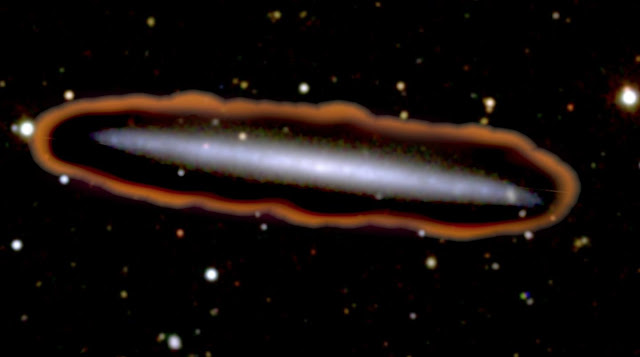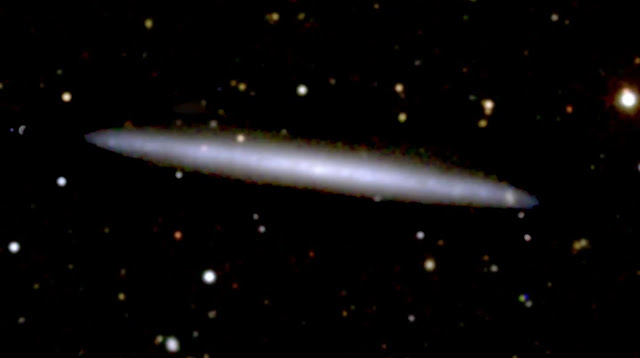

| Online: | |
| Visits: | |
| Stories: |

| Story Views | |
| Now: | |
| Last Hour: | |
| Last 24 Hours: | |
| Total: | |
Universe’s Ultraviolet Background May Provide Clues About Missing Galaxies
UV radiation is invisible but shows up as visible red light when it interacts with gas.
An international team of researchers led by Durham University, UK, has now found a way to measure it using instruments on Earth.
The researchers said their method can be used to measure the evolution of the UV background through cosmic time, mapping how and when it suppresses the formation of small galaxies.
The study could also help produce more accurate computer simulations of the evolution of the Universe.
UV radiation – a type of radiation also given out by our Sun – is found throughout the Universe and strips smaller galaxies of the gas that forms stars, effectively stunting their growth.
It is believed to be the reason why some larger galaxies like our Milky Way don’t have many smaller companion galaxies.
Simulations show that there should be more small galaxies in the Universe, but UV radiation essentially stopped them from developing by depriving them of the gas they need to form stars.
Larger galaxies like the Milky Way were able to withstand this cosmic blast because of the thick gas clouds surrounding them.
Galaxy UGC 7321 is surrounded by hydrogen gas, and as this gas is irradiated with UV radiation, it emits a diffuse red glow through a process known as fluorescence. This image shows the light emitted by stars inside the galaxy, surrounded by a red ring that represents the fluorescent emission induced by the UV radiation.

Credit: M. Fumagalli/T. Theuns/S. Berry
“Our research means we now have the ability to measure and map this UV radiation which will help us to further refine models of galaxy formation.”
Co-author Professor Simon Morris, in the Centre for Extragalactic Astronomy, Durham University, added: “Ultimately this could help us learn more about the evolution of the Universe and why there are so few small galaxies.”
Researchers pointed the Multi Unit Spectroscopic Explorer (MUSE), an instrument of the European Southern Observatory’s Very-Large Telescope, in Chile, at the galaxy UGC 7321, which lies at a distance of 30 million light years from Earth.
Colour image of the starlight emitted by a nearby spiral galaxy called UGC 7321. Stars in this galaxy lie in a disc, similar to that of our galaxy, the Milky Way. We see this disc nearly perfectly edge-on. Other sources in the image are foreground or background objects (galaxies and stars), unrelated to galaxy UGC 7321.
Credit: M. Fumagalli/T. Theuns/S. Berry
MUSE provides a spectrum, or band of colours, for each pixel in the image allowing the researchers to map the red light produced by the UV radiation illuminating the gas in that galaxy.
Co-author Professor Tom Theuns, in Durham University’s Institute for Computational Cosmology, said: “Ultraviolet radiation heats the cosmic gas to temperatures higher than that of the surface of the Sun.
“Such hot gas will not cool to make stars in small galaxies. This explains why there are so few small galaxies in the Universe, and also why our Milky Way has so few small satellite galaxies.”
Contacts and sources:
Leighton Kitson
Durham University
Source:



